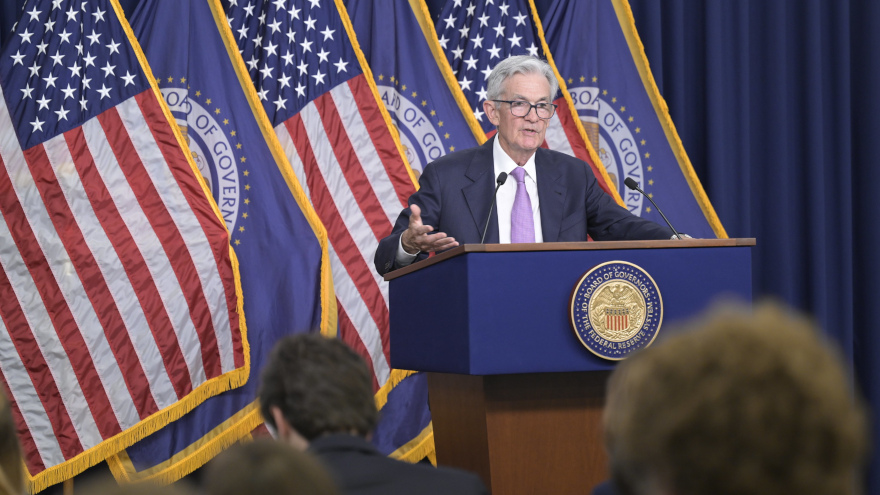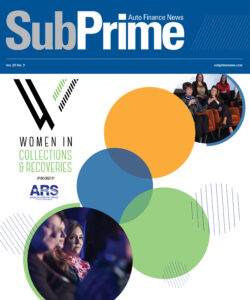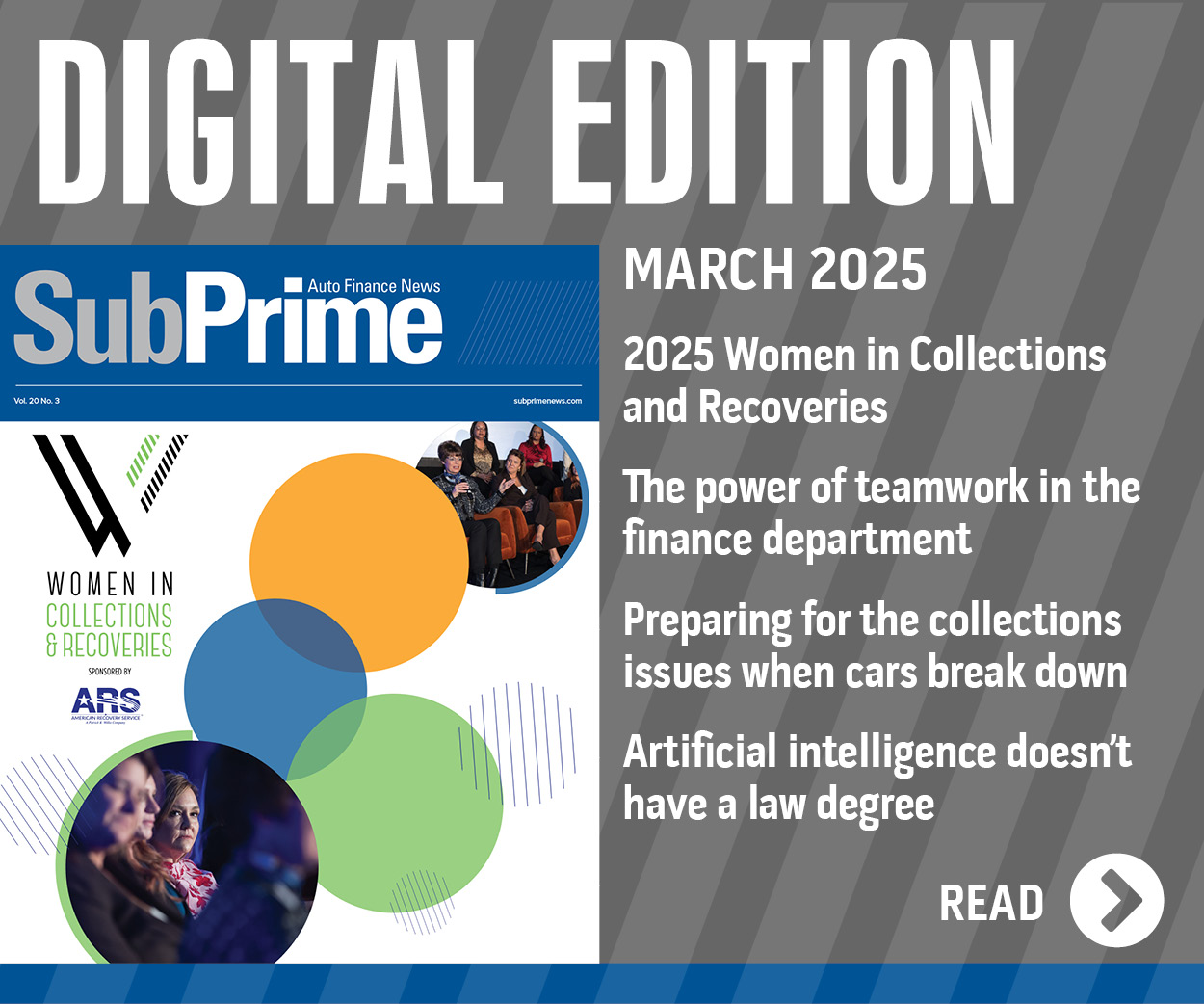Experts project potential impact in auto after Fed’s 50-basis-point rate cut

Federal Reserve chair Jerome Powell is pictured on Wednesday in Washington, D.C. Image courtesy of the Fed.
The interest-rate cut by the Federal Reserve finally came on Wednesday afternoon, and it was more than what many experts anticipated. Policymakers trimmed the federal funds rate by 50 basis points.
But, unfortunately, don’t expect an avalanche of car buyers in your dealership showroom and finance applications coming to your underwriting department as a result. At least not yet.
“While this rate cut is a positive development, it’s essential to keep expectations in check,” Edmunds head of insights Jessica Caldwell said in her analysis posted on Wednesday night. “This isn’t a silver bullet, and shoppers aren’t going to be flooding showrooms right away. Although vehicle prices have cooled from their record highs, they remain significantly elevated when viewed through a historical lens. While we may see an uptick in vehicle buying intent as rates decrease, the first couple of hurdles remain: securing loan approval and realistic budget expectations. Consumers must not only qualify for financing but also manage monthly payments to keep their vehicles.
“Looking ahead, the Fed’s next meeting is scheduled for the day after the presidential election,” Caldwell continued. “This timing adds complexity to the next decision when consumers and retailers alike will be watching closely and likely hoping for a continued downward trajectory in rates. However, chairman (Jerome) Powell emphasized multiple times that the Fed will approach decisions on a meeting-by-meeting basis, and future rate decreases are not guaranteed.”
As Caldwell mentioned, Powell reiterated how the Fed will approach any future decisions after all but one of the policymakers voted to approve this 50-basis-point rate reduction.
“This decision reflects our growing confidence that, with an appropriate recalibration of our policy stance, strength in the labor market can be maintained in a context of moderate growth and inflation moving sustainably down to 2%,” Powell said. “Our monetary policy actions are guided by our dual mandate to promote maximum employment and stable prices for the American people. For much of the past three years, inflation ran well above our 2% goal, and labor market conditions were extremely tight.
“Our primary focus had been on bringing down inflation, and appropriately so. We are acutely aware that high inflation imposes significant hardship as it erodes purchasing power, especially for those least able to meet the higher costs of essentials like food, housing, and transportation,” he continued.
“Our restrictive monetary policy has helped restore the balance between aggregate supply and demand, easing inflationary pressures and ensuring that inflation expectations remain well anchored. Our patient approach over the past year has paid dividends: Inflation is now much closer to our objective, and we have gained greater confidence that inflation is moving sustainably toward 2%,” Powell added.
“As inflation has declined and the labor market has cooled, the upside risks to inflation have diminished and the downside risks to employment have increased. We now see the risks to achieving our employment and inflation goals as roughly in balance, and we are attentive to the risks to both sides of our dual mandate,” he went on to say.
Like Caldwell, Cox Automotive chief economist Jonathan Smoke offered his reaction to the Fed’s decision through the prism of modest expectations. In his blog posted after the announcement, Smoke reiterated that the Fed’s actions won’t mean buy rates at dealerships will suddenly drop beginning on Thursday.
“It may take several weeks or even months for consumers waiting on lower auto loan rates to see any meaningful change,” Smoke said. “With auto loan performance still shaky, lenders will be reluctant to reduce the spreads they charge to compensate for risk. That means that auto loan rates are likely to be sticky on the way down. However, with the financial performance of consumers improving from lower rates on credit cards, auto loan performance should improve as well.
“As proof of that stickiness, average auto loan rates have drifted slightly higher in September, while longer-term bond yields and mortgage rates have declined. The average new auto loan interest rate so far in September has averaged 9.63%, and the average used auto loan rate has averaged 13.95%,” he continued.
“However, we have reached a critical point in time. With modest declines from the peaks reached earlier this year, average auto loan rates are now down year over year, but just barely. The worst is over,” Smoke added.
With policymakers already trimming rates by 50 basis points, Comerica Bank chief economist Bill Adams and senior economist Waran Bhahirethan now expect the Fed to make decreases of 25 basis points each when it has the opportunity to make changes in November and December.
However, Adams and Bhahirethan remain cautious about the trends policymakers watch closely when forming their rate decisions.
“Since the Fed last met, there were big downward revisions to the jobs statistics that show the labor market is not as strong as previous data indicated,” Adams and Bhahirethan wrote in their analysis released late on Wednesday. “Considering the downward revisions in the August jobs report, as well as the preliminary benchmark revision to payrolls announced in mid-August, job growth in the 12 months through August was just 157,000 per month, much slower than the 218,000 12-month average through June in the latest data available when the Fed met previously on July 30 and 31.
“As the Fed pivots, interest rates will fall substantially over the next six to 12 months. That is very welcome news for credit-sensitive sectors of the economy like housing, manufacturing, and retailing of cars and other big-ticket consumer products, which bore the brunt of high rates. Those sectors are a coiled spring that will bounce back as interest rates fall, sustaining the current economic expansion into 2025,” Adams and Bhahirethan went on to say.
Tom Kontos, the ADESA chief economist who retired from that role on Aug. 16, touched on interest rate trends at the Automotive Remarketing Alliance’s Summer Roundtable last month in Frisco, Texas.
“For a while there, we weren’t having to talk too much about inflation, but the last few years, of course, that’s resurrected itself in some pretty meaningful ways, and we’re still grappling with the aftermath of that with the high interest rates that are in place right now,” Kontos said at the late August event. “The interest rates are probably going to stay … the last meeting they held (at that rate) and the next opportunity that’s expected to result in at least a quarter-point cut is in September, so most folks are figuring on that happening, and that might be because the labor market has softened a bit.”
Still, Kontos said, the labor market trends do not alarm him, as there are still more than 100,000 jobs being added a month.
The inflation rate had slowed and was approaching the 2% level the Fed was eyeing in order to start “bringing the punch bowl back,” Kontos said.
“They’ve taken away the punch bowl for a long time now, and the party’s starting to simmer down enough where they’re concerned that it might die altogether, so they don’t want to induce any sort of unemployment situation where the unemployment rate starts rising too rapidly.”
Senior editor Joe Overby contributed to this report.

 View The Latest Edition
View The Latest Edition

